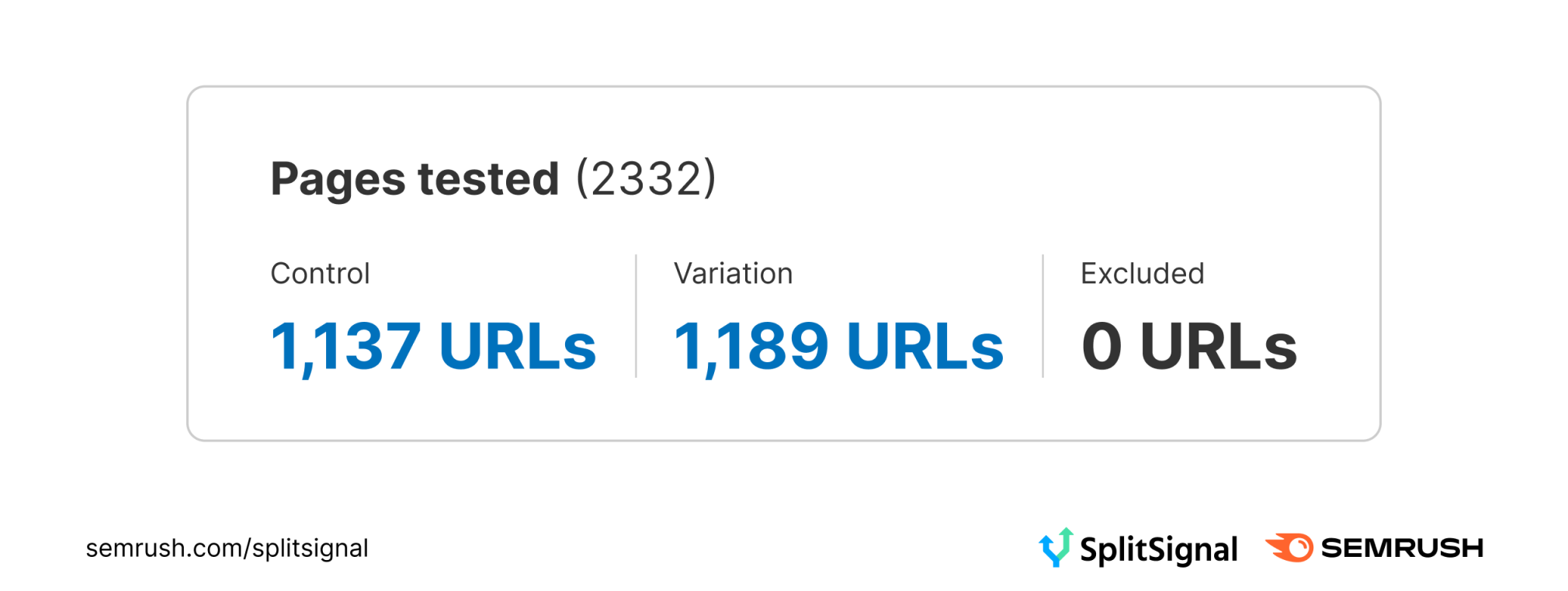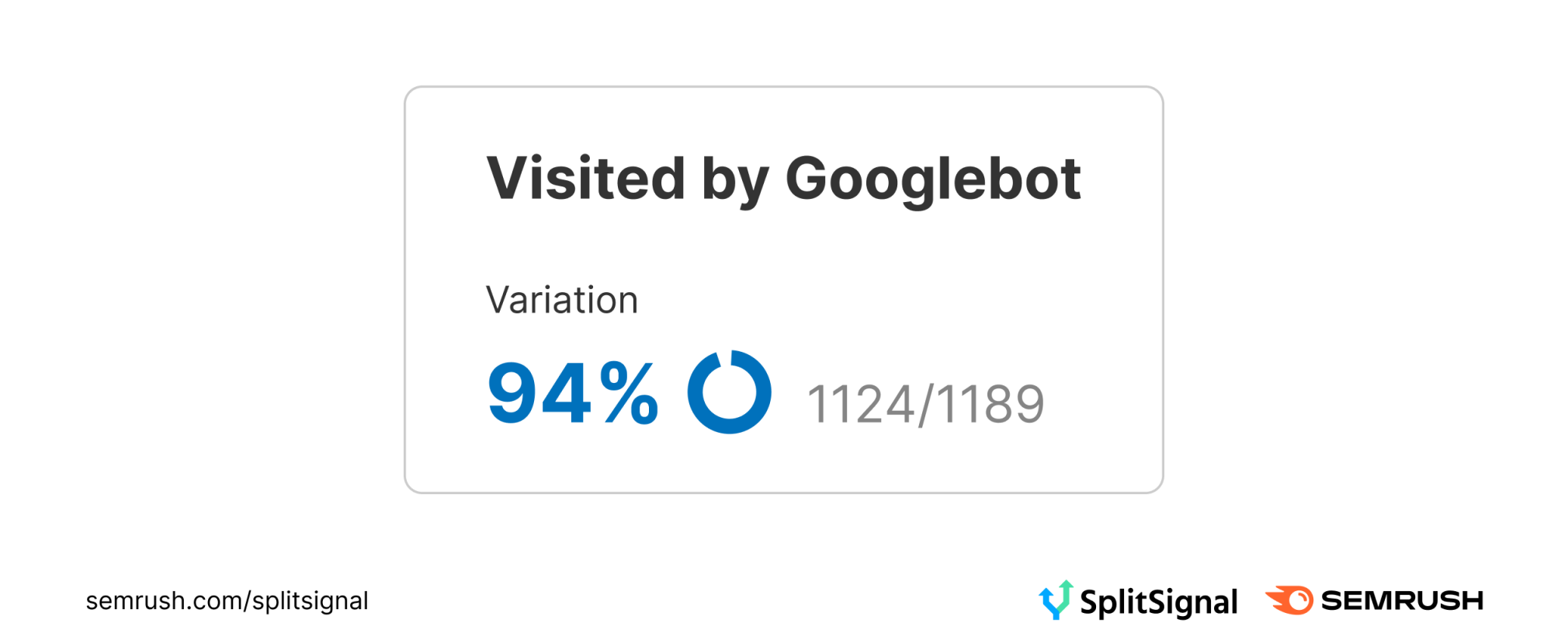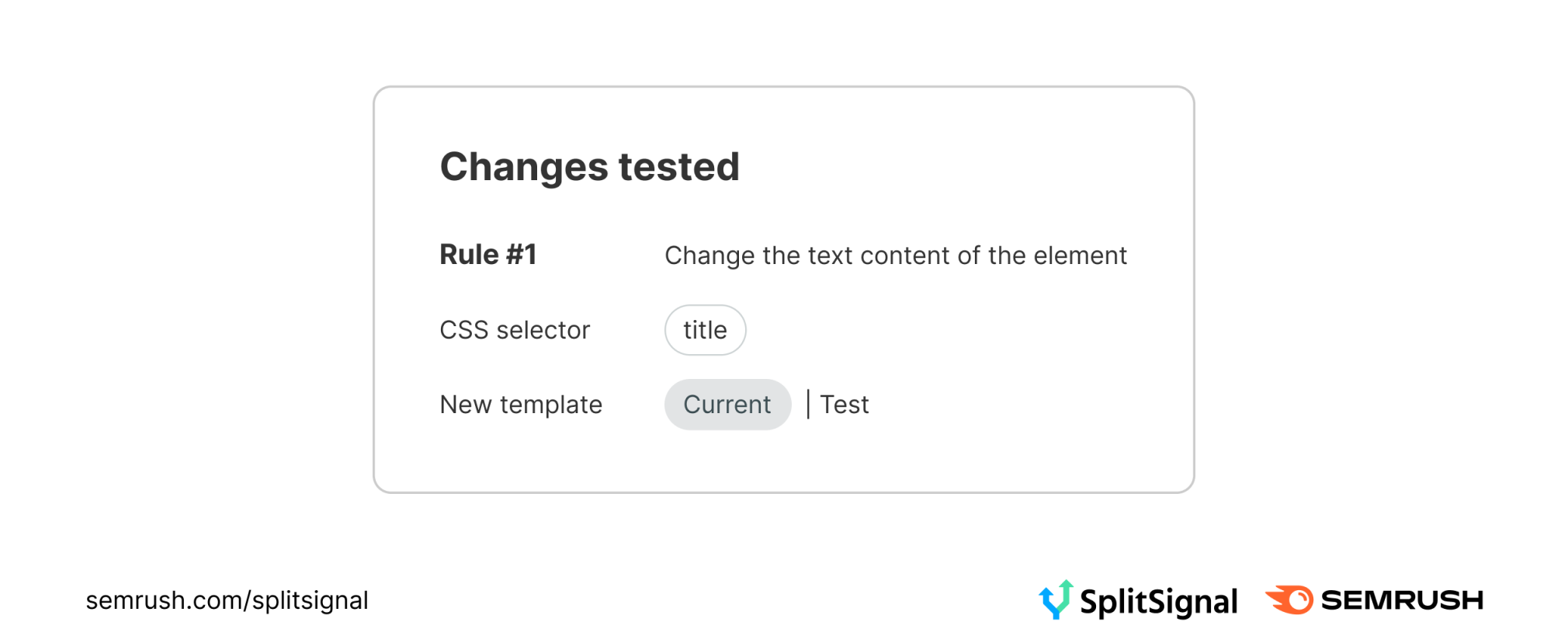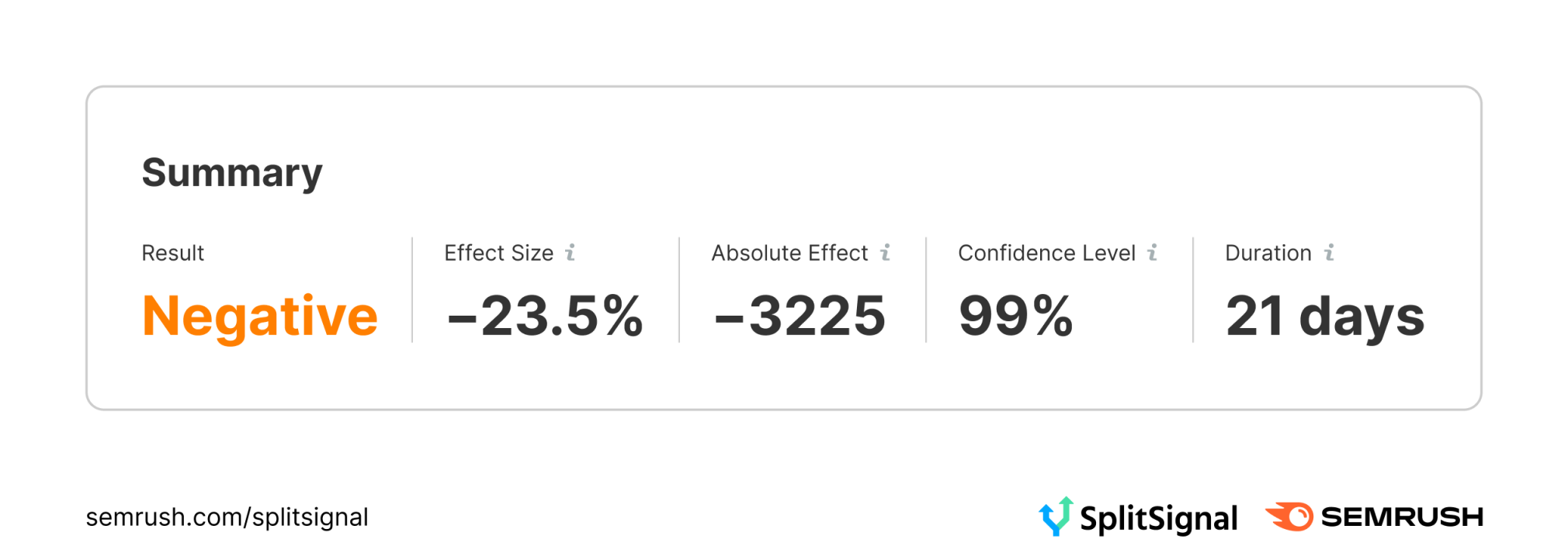In this blog post, we take a deep dive into negative SEO A/B tests and their insights.
If you are curious about how you can prevent your on-page SEO from negatively affecting your site, then keep reading.
Most SEOs in the enterprise sector have quarterly and annual SEO goals. SEOs use SEO key performance indicators (KPIs) to measure SEO goals. An example is a percentage of lift in organic sessions or an increase in conversion rate. When an SEO hits or exceeds their SEO goals, this can lead to bonuses and raises.
What SEOs don’t always consider is how to protect their web pages from a loss of organic traffic due to optimizations that adversely affect their sites. Without a line of sight to this issue, SEOs are implementing changes blindlybased on SEO best practices, making SEO goals harder to hit.
When Does On-page SEO Have a Negative Impact?
Website content changes can come fast and from many different departments in an enterprise organization. As SEOs, we have not had a way to push back on what is a good or bad optimization, except by quoting SEO best practices.
While SEO best practices are a good starting point, they consistently have different results on different websites.
How do you know if the change you are optimizing for will be positive or negative?
The truth is you can’t know without SEO A/B testing.
SEO A/B testing can show you what type of change your optimization will yield:
- A positive change
- A negative change
- No change
While we strive to have positive changes, we must know what a negative change is.
This allows us not to implement the negative change that would adversely affect:
- Clicks from Google search results
- Clickthrough rate (CTR) from Google search results
- Impressions in Google search results
- The average rankings of pages in Google search results
How Do We Define a Negative SEO A/B Split Test?
With SEO A/B testing, we use a group of pages with 100,000 clicks in the past 100 days.
- The pages are equitably split into two groups: control and variant
- We apply the test change to the variant group
- We run the test for 14 to 42 days
- The test is statistically relevant when we reach 95% in our confidence level metric
- When the test has completed running, and if the variant group clicks show below the control group, the test is negative
- There will be a negative effect size (percentage change) in the number of clicks from Google search engine results to the variant group
- There will be a negative absolute effect size (the difference in clicks between the control and variant groups)
- We will also see a decrease in the additional clicks graph when we have a negative result
Examples:






Analysis:
In the above example:
- The confidence level of the test is at 99%, so it is statistically significant
- The result is negative
- There is a decrease in clicks (effect size) by −23.5%
- There is a decrease in clicks between the control and variant groups (absolute effect size) by −3,225
In this example, the test shows that if this optimization were implemented without SEO A/B testing, the optimization would negatively impact existing organic traffic.
In this instance, we would recommend not implementing this test change. Instead, we suggest testing different changes until you receive positive test results that would provide an organic lift in clicks.
SEO Split Tests and Keyword Intent
We have found from running hundreds of SEO A/B split tests on SplitSignal (an SEO split testing platform) that the same tests perform differently on different sites, even in the same niche. When we overlay user intent and keyword intent, it makes sense why no two tests are the same. It also reinforces why you should constantly be testing to find organic growth potential.
Would you like to see more test examples? Join our email list and receive the most exciting tests in your inbox once a month.
Delivering on Your SEO KPIs
Ultimately SEO A/B testing can help prevent a reduction in organic traffic due to optimizations implemented solely on SEO best practices. This allows SEOs and marketing departments to deliver on their KPIs and goals. The last thing an SEO wants are changes that negatively impact traffic on their site, making their KPIs and goals further away and harder to achieve.
Without SEO A/B testing, you might not even be aware of the optimization changes that have the potential to affect your organic traffic on your site negatively.
Adding Google Search Console Metrics into Your SEO KPIs
Have you considered adding Google Search Console (GSC) metrics into your SEO KPIs? GSC metrics and SEO split testing can help you see if your SEO optimizations are changing positively, negatively, or not changing at all. This allows you as the SEO to be proactive with negative and no change results. You can then change up your tests until you receive a positive test. You will be able to show SEO ROI to your organization with SEO A/B split testing.
GSC Metrics:
- Clicks
- Clickthrough rate (CTR)
- Impressions
- The average rankings of pages
Start SEO Split Testing to Hit Your SEO KPIs
If you are interested in finding out more information on how you can improve your KPIs through split testing, submit your request here.
